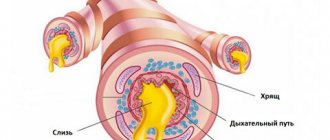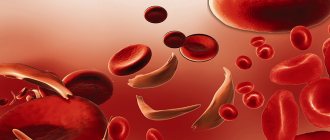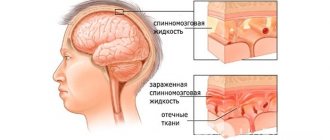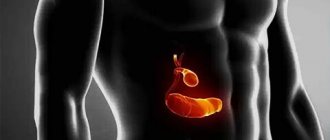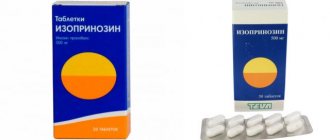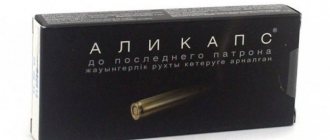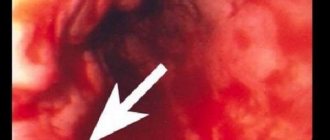Cholecystitis is an inflammation of the gallbladder.
The gallbladder is a hollow organ that serves as a reservoir for storing bile. It is located on the right, directly under the liver. Bile is secreted by the liver and accumulates in the gallbladder, where it “ripens”, acquiring the properties necessary for digestion. The passage of food through the intestines stimulates the contraction of the gallbladder, causing bile to enter the duodenum. Inflammation of the gallbladder leads to disruption of the digestive system and has an extremely negative impact on a person’s overall health.
Cholecystitis is one of the most common gastroenterological diseases. On average, cholecystitis occurs in 10-20% of the adult population. With age, the likelihood of the disease increases; most often, people aged 50-60 years suffer from cholecystitis. At the same time, women get sick more often than men (60-75% of cases are women). The emergence and development of the disease is facilitated by living conditions in the metropolis (poor nutrition, lack of exercise, stress and infections). The aggravation of these factors leads to the fact that the incidence of cholecystitis has been increasing recently.
Chronic and acute cholecystitis
There is no generally accepted classification of either chronic or acute cholecystitis, hence some illogicality in dividing the disease according to different criteria. When it turns out that a purely morphological criterion is woven into the graduation according to the severity of the course, and the degree of severity is mixed with the variants of the course of the pathological process.
Chronic cholecystitis is divided according to the presence of stones into acalculous or non-calculous and calculous. In acalculous cholecystitis, inflammation predominantly “nests” in the place where bile exits - in the cervix, and its cause is associated with the improper functioning of the gallbladder - a “lazy” bladder.
According to the nature of the damage to the gallbladder wall, catarrhal - inflammation of the mucous membrane and submucosal layer - and purulent are distinguished. There is also a purulent-ulcerative form of chronic cholecystitis, which can be considered a progression of simply purulent chronic cholecystitis. Catarrhal cholecystitis does not necessarily become purulent, but it is also possible in the reverse order, but only with timely initiation of treatment and high sensitivity of the flora to antibiotics.
According to the variant of the course of the disease, chronic cholecystitis can be sluggish, which is not noticed by the patient, but is detected almost by chance during ultrasound. This form is sometimes called latent - hidden. Inflammation with exacerbations is referred to as recurrent cholecystitis. There is also the so-called residual chronic calculous cholecystitis, when the patient after an exacerbation is left only with the memory of chronic cholecystitis, and there are no exacerbations for many years.
Depending on the severity, there are several forms, which are important only for the recurrent variant. Mild - no more than two exacerbations per year, no more than four biliary colics. Biliary colic is an attack of mild pain lasting no more than 6 hours, which goes away after taking an antispasmodic and analgesic, without signs of general inflammation. Colic occurs when a stone migrates into the cervix, followed by a large stone moving out of it into the cavity of the bladder, and a tiny one moving down the duct.
Criteria for establishing a moderate degree of severity: up to four exacerbations and at least six colics, more is possible, because for a severe degree only exacerbations are fundamentally important - more than five during the year.
Take care of yourself, book a consultation now
Classification of pathology
All acute cholecystitis is divided into two groups:
- uncomplicated acute cholecystitis;
- complicated acute cholecystitis.
Uncomplicated acute cholecystitis:
- catarrhal cholecystitis;
- phlegmonous cholecystitis;
- gangrenous cholecystitis.
Acute cholecystitis can be complicated by:
- peri-vesical infiltrate;
- paravesical abscess;
- perforation of the gallbladder;
- peritonitis;
- obstructive jaundice;
- cholangitis;
- biliary fistula.
Diagnostics
During the period of exacerbation, signs of inflammation will appear in the blood test: an increase in the number of leukocytes and the proportion of band forms, acceleration of ESR, bilirubin levels will increase, C-reactive protein will appear, and transaminases will increase. During remission, the blood may not react at all.
Ultrasound reveals deformations and thickening of the walls of the gallbladder, and the structure of the bile changes. The most informative method is endoscopy combined with ultrasound - ultrasonography. During the procedure, both the bladder wall and the functioning of the common bile duct are clearly visible, and it is easy to take bile for analysis.
Duodenal intubation - obtaining different portions of bile for examination - is a classic diagnosis of cholecystitis; they look for signs of an infectious agent in the bile under a microscope and inoculate it on a nutrient medium to see what is growing and how it reacts to antibiotics.
In some cases, they resort to X-ray examination, when the release of a contrast agent with bile in dynamics is used to determine its accumulation and excretion. Similar contrast enhancement is combined with endoscopy.
Computed tomography characterizes not only the bubble itself, but also the surrounding structures, although not all stones in the lumen of the bubble can be seen; some stones do not retain X-rays and are therefore not visible. But with CT, vessels and ducts are clearly visible in a three-dimensional image. A similar result is achieved with MRI, only without the harmful radiation.
More about the disease
The word “catarrhal” translated from Greek means “swelling.” Medical terms are always precise and logically verified. Therefore, it is not difficult to guess that in this stage of cholecystitis such a phenomenon as edema comes to the fore. And, first of all, the wall of the bladder swells.
The cause of bladder inflammation is a whole complex of pathological (abnormal) changes in the body. But the main role in this process is played by the block of the cystic duct and infection.
Treatment of chronic cholecystitis
Severe exacerbation of cholecystitis may require hospitalization. The main method of treating stone cholecystitis is surgery, but it is performed outside of exacerbation. The classic therapeutic triad for exacerbation: cold, hunger and rest. Analgesics and antibiotics, antispasmodics and intravenous solutions to relieve intoxication are added to it.
Patients do not always immediately decide to undergo cholecystectomy, but over time, with frequent exacerbations, they come to this difficult decision. The stones keep the infection dormant with no hope of complete cure. Removal of the gallbladder may bring unpleasant symptoms of specific postcholecystectomy syndrome into life, but this is still not chronic inflammation with frequent and painful exacerbations.
Today there are several approaches to removing the bladder, differing in the size of the abdominal wall incision. Classic surgery with a large scar, minimal surgery with an incision of up to 5 cm, and laparoscopic surgery through punctures of the abdominal wall. The internal stage of the operation for any incision is always the same in volume - complete removal of the bladder, but recovery with a small incision is faster and the cosmetic consequences are less pronounced.
There is an option for dissolving stones with medications, but its effectiveness leaves much to be desired, there are no guarantees of complete dissolution of stones, and treatment takes at least two years. This can only be tried with a certain composition of the stone and its size up to one and a half centimeters. It is guaranteed that the cost of treatment will be higher than surgery, and during the treatment period, exacerbations continue in half of the patients.
It is possible to break a single or small stone with a special device that generates high-energy waves in combination with stone-dissolving drugs. There is a method of introducing a solvent into the gallbladder through a catheter, the procedure is quite lengthy and without guarantees of results.
Cholecystectomy is not an easy operation for the surgeon and the patient; much depends on the professionalism of the surgeon. Laparoscopic gallbladder removal took place almost three decades ago in Lyon, France. And for the first time, an English doctor removed two gallstones through an incision in the abdominal wall in 1618 - almost four centuries ago, the patient was elderly, but survived. After this, surgeons for two and a half centuries could not approach the radical removal of the diseased bladder, which took place in 1882. Then there was no anesthesia, antibiotics or normal painkillers, which is available to everyone today, and with a positive attitude towards a good result, treatment will be effective.
Manifestations of cholecystitis
The symptoms of chronic cholecystitis depend on its stage, of which there are only two: exacerbation and remission - the absence of clinical signs of the disease. For calculous cholecystitis, there is also a variant of biliary colic, which does not mean an exacerbation, but occurs during a period of remission, this is such a tiny relapse of the disease for a few hours. According to the clinical manifestations, biliary colic is the same attack of pain in the right hypochondrium, radiating to the shoulder, under the shoulder blade, with nausea and even vomiting, and stool disorders.
Colic is caused by the movement of a stone to the cervical area, when it temporarily blocks the outflow of bile and the pressure in the bladder increases due to the constantly arriving bile. Taking medications that relax the smooth muscle fibers in the cervix against the background of human movements leads to migration of the stone, and colic resolves. No more than 6 hours are allocated for the entire process from start to finish, because then the colic will be reclassified as an exacerbation with all the ensuing therapeutic consequences.
It cannot be said that in a patient with chronic cholecystitis, without an exacerbation, everything is fine, because unpleasant sensations in the right hypochondrium are possible, especially with a large and fatty meal, while running and when shaking. But nausea, constipation, heartburn and bitterness in the mouth are very nonspecific and can occur with any disorder, organic and functional, in the gastrointestinal tract. If you follow a dietary regime, you can achieve a very good quality of life without reminders of chronic ill-being.
Exacerbation of cholecystitis
Exacerbation of chronic cholecystitis is primarily characterized by pain, which is accompanied by other symptoms. Based on the prevalence of the most striking symptom, variants such as dyspeptic, cholestatic, asthenovegetative and intoxication are distinguished. There is a sign of general inflammation and intoxication of varying severity, which are absent in biliary colic.
Pain does not occur immediately, but after some time has passed after eating, because pain occurs when the bladder contracts, and it will also follow when food enters the duodenum. The pain is dull, localized in the right hypochondrium or in the pit of the stomach, and can radiate to the right shoulder and under the scapula. The pain may intensify with changes in body position and may change its character, but in most patients the pain is monotonous. Each person's perception of pain is different, and the same intensity may be felt by some as unbearable suffering, while another will rate it as average. Women can easily endure more intense pain than men.
There are variations of atypical pain forms, for example, pain can simulate cardiac pain, and even be localized in the region of the heart, and the ECG may not be entirely normal, and after eating, arrhythmias or extraordinary heart beats—extrasystoles—occur.
Cholecystitis can be disguised as inflammatory changes in the esophagus - esophagitis, and this option is called esophagealgic with pain behind the sternum, and as if the passage of a bolus of food is not smooth, with heartburn and bitterness in the mouth. The patient usually characterizes such an attack as like swallowing a stake.
Disruption of the rhythm of bile release affects the functioning of the intestines, very often spasmodic pain occurs in different parts of the abdomen, and constipation occurs. Since everything in the gastrointestinal tract is interconnected, the oral mucosa also suffers, and the tongue acquires a coating that forms at the edges, as it were, a pattern of teeth imprinted on the mucosa. Appetite suffers, and there may be taste perversions.
During exacerbation, depending on the degree of morphological changes, a general inflammatory reaction develops. With catarrhal cholecystitis, inflammation is manifested by low temperature, with purulent cholecystitis - fever with stunning chills. Other symptoms of cholecystitis include weakness, irritability, sleep disturbances, palpitations, and even increased blood pressure. If the outflow of bile is disrupted, the skin becomes slightly jaundiced and dry. There may be a dull pain in large joints.
Make an appointment with a doctor now
Our services
The administration of CELT JSC regularly updates the price list posted on the clinic’s website. However, in order to avoid possible misunderstandings, we ask you to clarify the cost of services by phone: +7
| Service name | Price in rubles |
| Ultrasound of the abdominal organs (liver, gall bladder, pancreas, spleen) | 3 800 |
| Ultrasound of the abdominal organs with functional test | 4 000 |
| Gastroscopy (videoesophagogastroduodenoscopy) | 6 000 |
All services
Make an appointment through the application or by calling +7 +7 We work every day:
- Monday—Friday: 8.00—20.00
- Saturday: 8.00–18.00
- Sunday is a day off
The nearest metro and MCC stations to the clinic:
- Highway of Enthusiasts or Perovo
- Partisan
- Enthusiast Highway
Driving directions
Why does inflammation develop?
For the appearance of cholecystitis, predisposing factors are necessary that will help the infectious agent live in the gallbladder for some time and not leave it with a portion of bile. There must be a disruption of the outflow of bile from the bladder, its temporary stagnation. Often inflammation occurs against the background of stones that interfere with the normal outflow of secretions, occasionally moving and, like a valve, blocking the neck, which turns into the cystic duct. With acalculous chronic cholecystitis, which occurs much more often than acalculous acute cholecystitis - one in a hundred patients, the outflow is also disrupted for many reasons.
Due to heredity or a functional disorder, or even for both reasons, the gallbladder can become sluggish - hypotension or even hang like a wineskin - atony. This will also be facilitated by the lack of physical activity of the owner of the bladder, as well as his excess weight, addiction to a diet unbalanced in fats with irregular meals. The body requires consistency in nutrition, if you eat when you have to, constantly changing the time of eating, then bile will either stagnate with a long interval between meals, or not have time to be produced in sufficient quantities with a short one.
Excess weight helps the development of cholecystitis because a person moves little and the tone of the bladder is reduced. With cholecystitis without stones, as a rule, there is no excess weight, but negligence in relation to diet can be traced.
The development of infection is facilitated by the reflux of pancreatic secretions. Anatomically, the cystic duct merges with the hepatic duct to form the common bile duct or common bile duct, into which the pancreatic duct flows shortly before entering the duodenum. With atony of the biliary tract, pancreatic secretion may move against the flow of bile, especially since bile is released from the bladder in one or two portions only during meals. When pancreatic secretions containing a mixture of enzymes are released, damage to the duct mucosa occurs, similar to a mild chemical burn; such damaged tissue is preferred by a variety of infectious flora.
Gender also plays a role, but not as pronounced as in acute cholecystitis. Recently, men tend to equal women in the incidence of chronic cholecystitis; in women, sex hormones contribute to the formation of stones in the bladder. A significant influence of the neuropsychic factor is noted as an additional reason for the development of inflammation in the gallbladder. In old age, malnutrition of the bladder is seriously affected by extensive vascular atherosclerosis.
In all cases, three most important factors work against the owner of the gallbladder: disruption of the outflow of bile with a change in its viscosity and, of course, the addition of an infectious agent.
